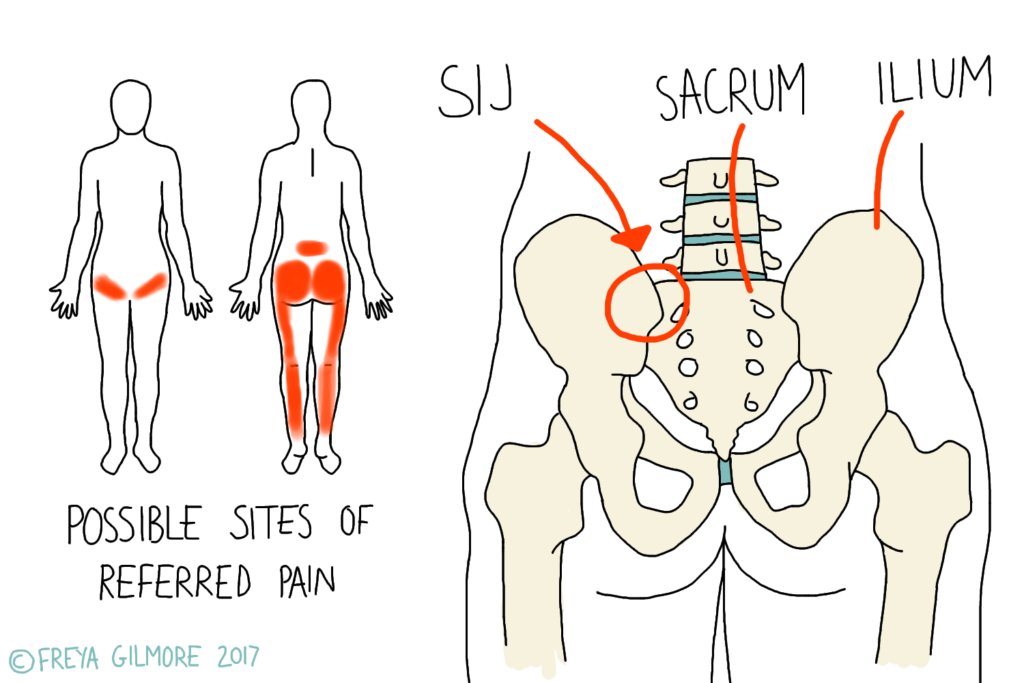The SIJ or sacroiliac joint is a large joint at the back of the pelvis, where the base of the spine (sacrum) meets a specific part of the pelvis (ilium). It is a very stable joint, but can be a case of lower back pain. Sometimes an SIJ problem is mistaken for sciatica, as it can cause referred pain in the buttocks and legs.
SIJ Anatomy
You have one SIJ on either side of the spine. Along with the pubic symphysis at the front of the pelvis, they make a ring when viewed from above. With this in mind, it makes sense that dysfunction in one of the three joints could impact the others. Fortunately, due to the incongruent shapes of the joint and the many supporting ligaments, the SIJ is usually held quite firmly in place.
The role of the SIJ is one of stability and shock absorption. Strong forces travel through here from above and below: body weight pushes down on it and the impact of walking travels up.

Referred Pain
Referred pain from the SIJ can be easy to mistake for sciatica, as it often follows the same course. However, whereas sciatica is likely to be a sharp or shooting pain in a defined line, referred pain is typically more dull and vague. Pins and needles, numbness, or weakness are also much less likely to feature in referred pain. Your osteopath has some tests they can perform to determine whether or not the SIJ or sciatic nerve are irritated. With this knowledge, we can develop an appropriate treatment plan accordingly.
The SIJ in Pregnancy
Although the joint is usually stable with limited movement, this needs to change in preparation for childbirth. Hormones that encourage the ligaments of the pelvis to relax are released surprisingly early in pregnancy. This can cause lower back pain long before the bump is big enough to increase mechanical demands of the back. Symptoms are often worse when transitioning from sitting to standing, especially if the movement requires the legs to be wide apart, such as getting out of a low car. Turning over in bed can also present a challenge.
This pain can be labelled PGP: pelvic girdle pain. If left to progress, it may develop into SPD: symphysis pubis dysfunction. This is much more painful, and represents the excessive instability within the pelvis. Here the pubic symphysis becomes wider, putting further strain on the SIJs. It can result in the need for crutches, and it can impact which birthing positions are appropriate. Wider legged positions will further aggravate the condition, so it’s worth nipping in the bud if you do develop similar symptoms. As you Osteopath, Beverley can help guide you to strengthen the muscles around the pelvis. Beverley can also find management strategies to ease discomfort in the meantime. In addition, she will look to see if other areas of the body are stiff, and putting too much pressure on the pelvis as a result.
